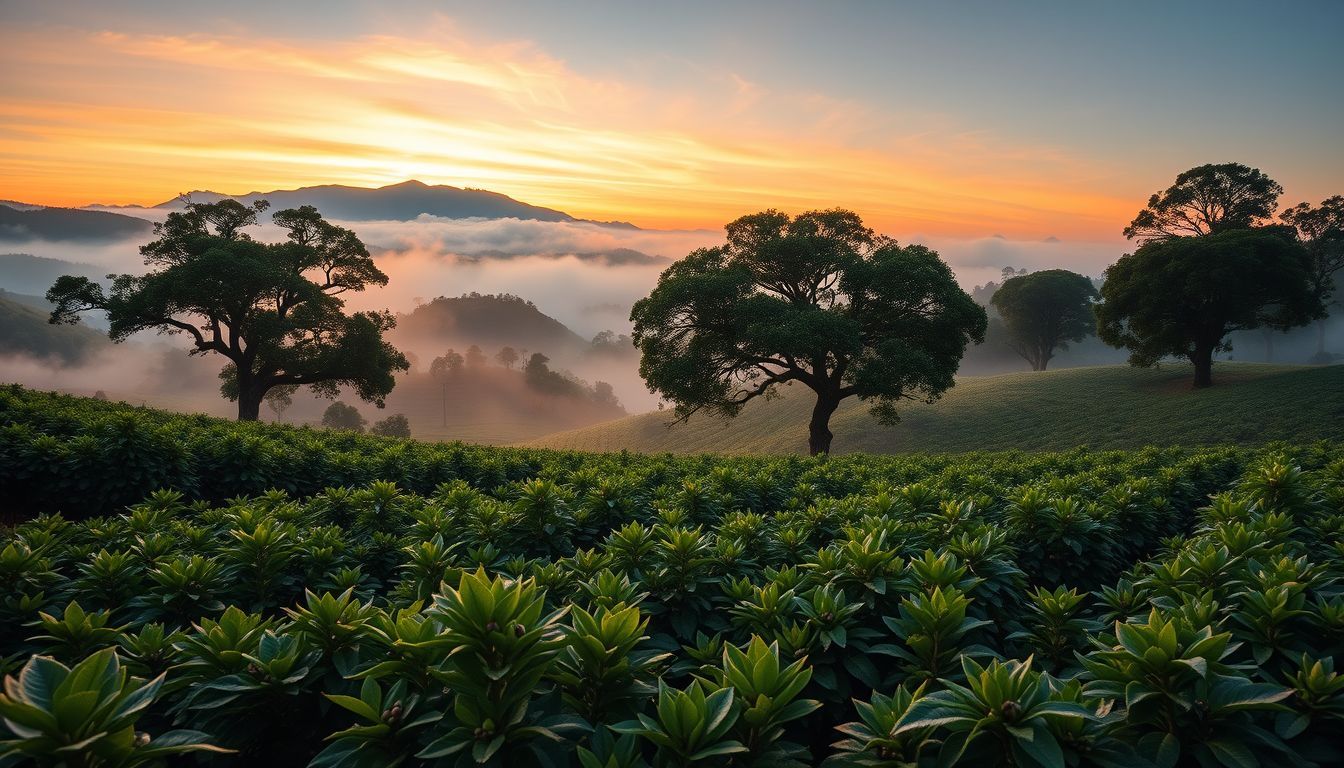The Role of Coffee Biodiversity: How Plant Varieties and Farming Diversity Influence Flavor and Sustainability
Exploring the intricate tapestry of coffee biodiversity, this article delves into how diverse plant varieties and farming practices shape the flavor profiles of our beloved brew and contribute to environmental sustainability.

Amazon Affiliate Disclosure
This post contains affiliate links. If you purchase through these links, we may earn a small commission at no additional cost to you.
The Role of Coffee Biodiversity: How Plant Varieties and Farming Diversity Influence Flavor and Sustainability
In the quiet predawn hours, as the world stirs from slumber, a ritual unfolds in countless homes—a steaming cup of coffee cradled between hands, its aroma a gentle beckoning to the day ahead. Yet, behind this simple pleasure lies a complex and delicate tapestry woven from the threads of biodiversity. The myriad plant varieties and diverse farming practices that cultivate our coffee not only shape its flavor but also anchor the sustainability of its future.
The Symphony of Coffee Varieties
Arabica: The Delicate Virtuoso
Coffea arabica, the most cherished of coffee species, thrives in the cool, high-altitude regions of the world. Its beans are celebrated for their nuanced flavors, often described as sweet and complex, with a bright acidity that dances on the palate. However, Arabica's sensitivity to pests and climate fluctuations renders it vulnerable, a fragile note in the symphony of coffee cultivation.
Robusta: The Resilient Bass
In contrast, Coffea canephora, known as Robusta, flourishes in lower altitudes and warmer climates. Its beans yield a brew with a robust, earthy flavor and a higher caffeine content, offering a sturdy foundation to blends and instant coffees. Robusta's resilience to diseases and harsh conditions makes it a steadfast player in the coffee ensemble.
Liberica and Excelsa: The Exotic Harmonies
Beyond the familiar strains of Arabica and Robusta, lesser-known species like Liberica and Excelsa contribute unique notes to the coffee melody. Liberica, with its large beans and distinctive floral aroma, and Excelsa, offering tart, fruity profiles, enrich the diversity of flavors available to the discerning palate. These varieties, though less prevalent, embody the rich potential hidden within coffee's genetic reservoir.
Farming Practices: Cultivating Diversity
Shade-Grown Coffee: A Canopy of Life
In the embrace of towering trees, shade-grown coffee plantations mimic natural forest ecosystems. This practice not only nurtures the coffee plants but also fosters a habitat teeming with biodiversity. Birds, insects, and other wildlife find refuge among the branches, creating a balanced environment where natural pest control thrives. The shade slows the ripening of coffee cherries, allowing sugars to develop more fully and resulting in beans with enhanced flavor complexity. Studies have shown that shade-grown coffee farms can support up to 184 bird species, including migratory ones, underscoring their role in preserving biodiversity. (en.wikipedia.org)
Agroforestry: Interwoven Growth
Agroforestry integrates coffee cultivation with other crops and trees, creating a mosaic of plant life that mirrors natural ecosystems. This diversity improves soil health, reduces erosion, and enhances resilience to climate change. Farmers practicing agroforestry often plant fruit or nut trees alongside coffee, providing additional income streams and food sources. In Tanzania and Vietnam, initiatives have distributed over 160,000 shade tree seedlings to farmers, promoting agroforestry practices that bolster both biodiversity and farmer livelihoods. (volcafe.com)
Regenerative Agriculture: Healing the Earth
Regenerative agriculture focuses on restoring soil health through practices like composting, cover cropping, and minimal tillage. By enhancing soil organic matter and microbial activity, these methods improve water retention and nutrient availability, leading to healthier coffee plants and more sustainable yields. In Brazil, farmers adopting regenerative practices have observed increased resilience in their coffee crops, with benefits extending to the broader ecosystem. (reuters.com)
The Interplay of Biodiversity and Flavor
The genetic diversity of coffee species and the ecological richness of their growing environments intertwine to shape the sensory experiences in our cups. A single-origin Arabica from a shaded Ethiopian forest may present floral and citrus notes, while a sun-drenched Robusta from Vietnam might offer bold, chocolatey flavors. This interplay underscores the importance of preserving diverse coffee varieties and farming practices to maintain the spectrum of flavors cherished by coffee enthusiasts worldwide.
Sustainability: A Harmonious Future
Embracing biodiversity in coffee cultivation is not merely an aesthetic or gustatory choice; it is a commitment to sustainability. Diverse ecosystems are more resilient to pests, diseases, and climate fluctuations, reducing the need for chemical inputs and fostering long-term productivity. Moreover, supporting a range of coffee species and farming methods safeguards the livelihoods of farmers and the cultural heritage embedded in coffee-growing regions.
Conclusion
As we savor each sip of our morning brew, let us acknowledge the intricate web of life that contributes to its existence. The preservation of coffee biodiversity—through the cultivation of various plant species and the adoption of diverse, sustainable farming practices—is essential for the continued enjoyment of coffee's rich flavors and the health of our planet. In this symphony of cultivation, every note matters, and together, they compose a melody that resonates with both tradition and innovation.
Note: This article draws upon information from various sources, including studies on shade-grown coffee and agroforestry practices.

Ben Carter
I spent the first part of my life learning the language of the wild—the rustle of leaves, the silence of snow, the resilience of a lone tree. In my writing, I try to translate that language, exploring how the landscapes around us shape the landscapes within us. My stories are quiet, but I hope they speak to a deeper part of you.


